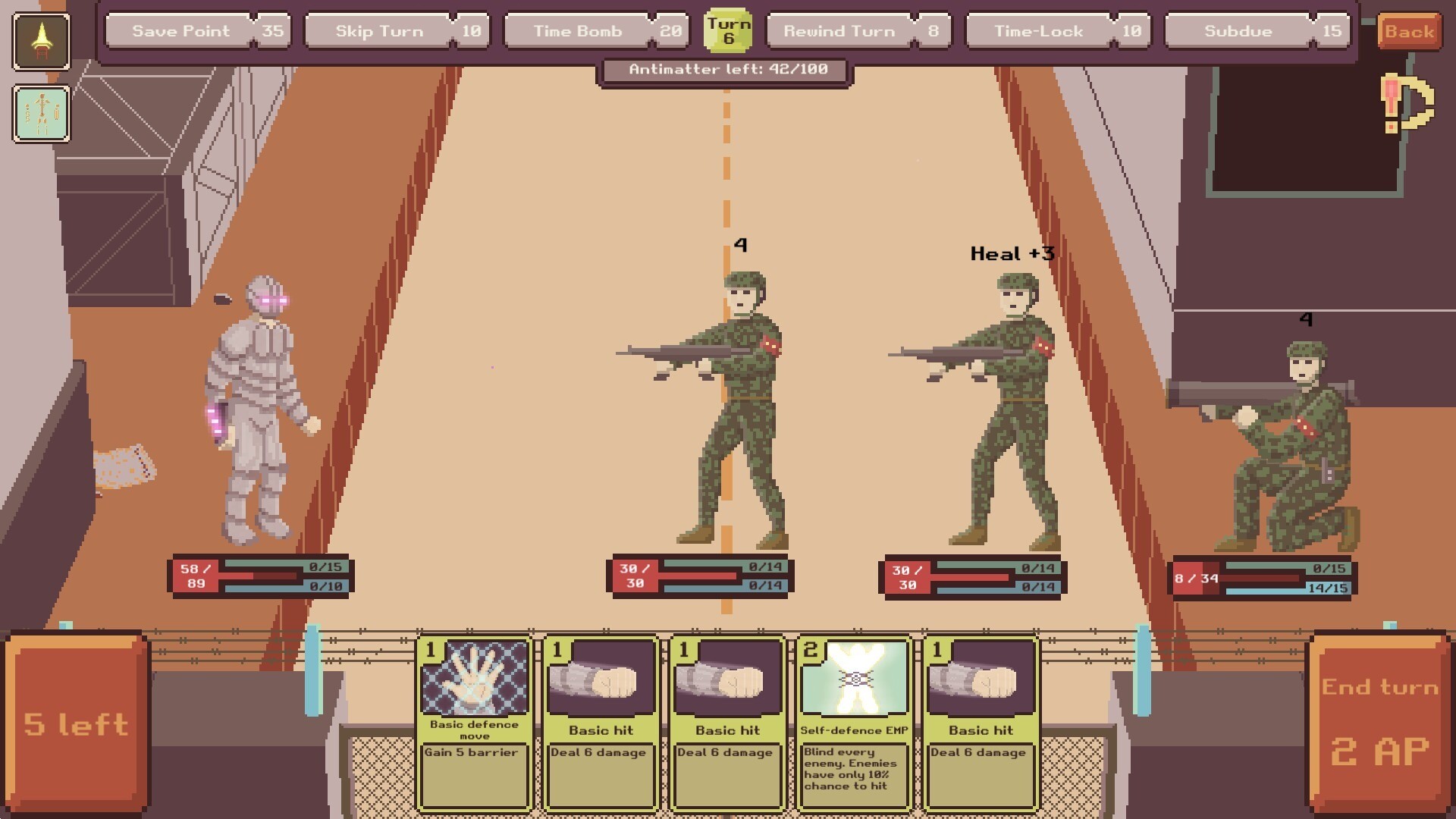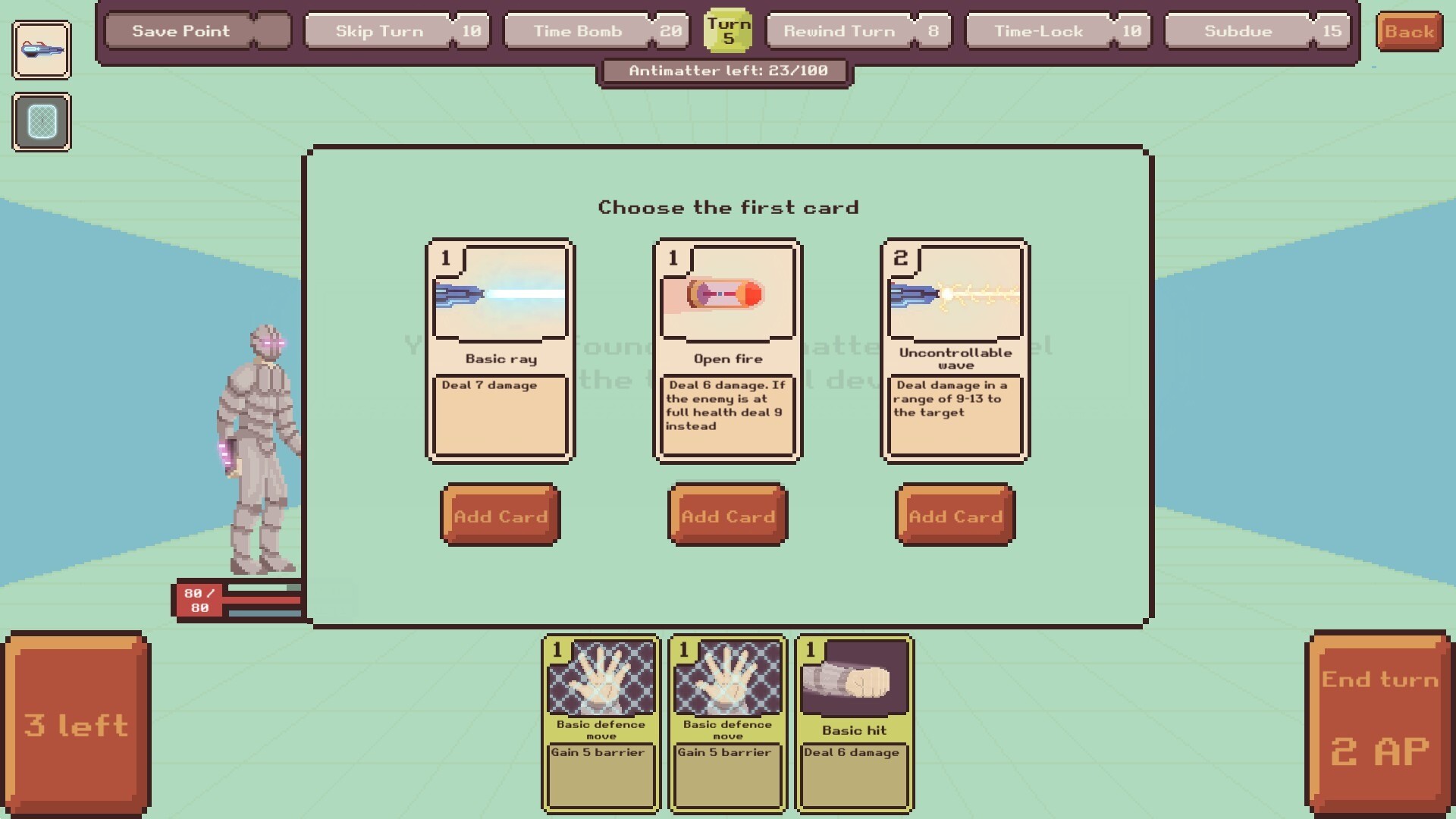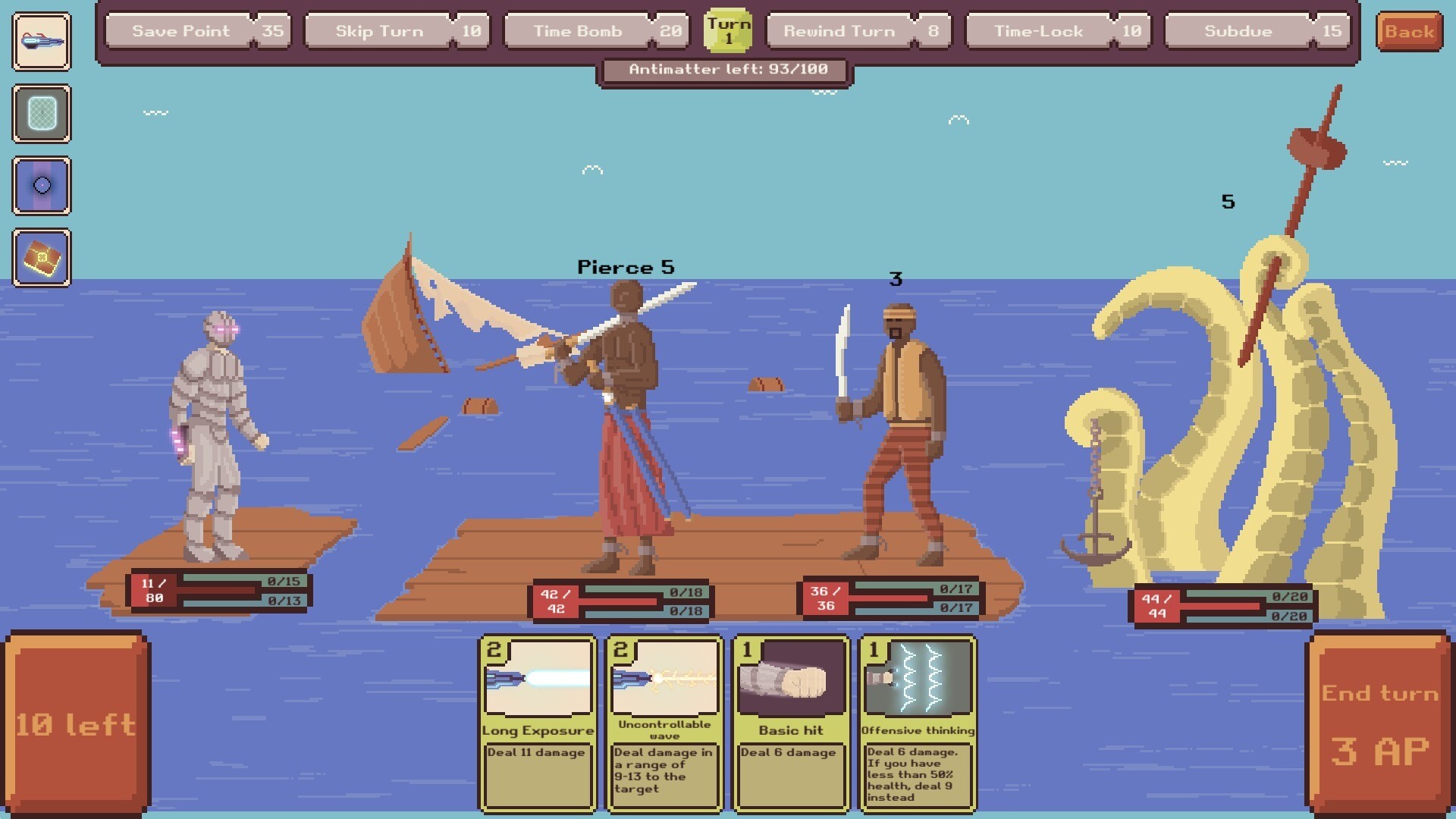Looping Bravery by Purisic Games
Looping Bravery is another take on the card-based battle system popularized by the likes of Monster Train. This particular iteration on the theme employs a science fiction setting and a less-is-more approach to game design.
Time Is a Flat Circle
This game is the creation of a solo developer, and to be blunt, it looks it. The pixel art sprites will be either “charming and retro” or “dated and primitive,” depending on your taste.
The flat, bland backgrounds don’t help, nor do the almost nonexistent animations; an attack is represented as a sprite moving horizontally toward its target, usually accompanied by a sound effect.

On the plus side, the score – a minimalist selection of analog synth textures – helps by adding some ’70s sci-fi television atmosphere that compliments the faded pastel color scheme.
Ever-Tightening Loops
While the presentation might be less than impressive, the simplified approach works far better in terms of mechanics. At the beginning of each run, you’ll select a pair of weapons, one offensive – from fairly conventional ray guns to drones – and a defensive weapon like a force field or cyborg exoskeleton.
All the cards in your arsenal – including new ones after each battle – tie into one or the other of these weapons, which gives enough complexity to keep things exciting but keeps your options narrow enough that you won’t be paralyzed by too many choices.
Iterative Innovations
Likewise, combat is simple enough to learn but complex enough to allow for emergent strategies. A “Break” gauge that triggers additional damage and effects encourages a more aggressive and experimental approach to the Looping Bravery’s card-based combat. So does a timing mechanic designed separately for each level: on certain turns, special events occur which might be helpful or harmful to the player.

This leads to the game’s most unique mechanic, the TMD (or Time Manipulation Device), which lets you move forward or backward through the turn count or even set turn-based events in motion. Powered by antimatter collected after each fight, it functions a lot like the “Diabolic Essence” mechanic in Rogue Lords, giving you a chance to cheat the game’s own established mechanics (and thereby paradoxically turning cheating into an official part of the mechanics).
Terminate the Spire
The time travel theme works nicely with that in narrative and mechanical terms. Looping Bravery’s story of a cyborg sent back in time to avert an alien invasion borrows heavily from the likes of Terminator and 12 Monkeys, not to mention the similarly titled Looper. Each run reveals more of the story as our hero fights through temporal disorientation to remember his mission and his previous encounters with the same characters.

I was particularly amused by how the first few runs were marred by violent nausea apparently caused by the time travel process; as someone who gets motion sickness from boats and VR alike, I could definitely relate to our cyborg hero.
While Looping Bravery has little chance of toppling top performers like Slay the Spire, it does provide some nice twists on the genre, and it’s an impressive and thoughtful addition to the card-battling arena.
Looping Bravery is available via Steam.
Watch the trailer for Looping Bravery below:





